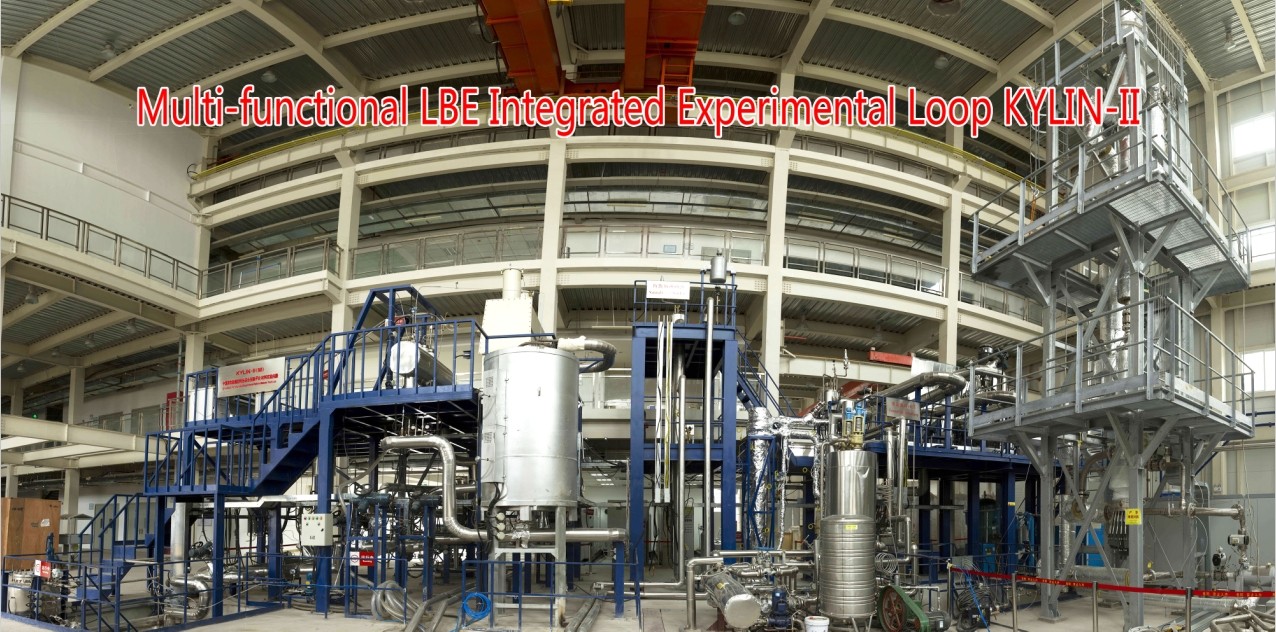On February 21st, the project assessment meeting of "Design and Development of multi-functional lead-bismuth eutectic (LBE) integrated experimental loop KYLIN-II for lead-bismuth cooled reactor technologies" took place at the Institute of Nuclear Energy Safety Technology (INEST), Chinese Academy of Sciences (CAS). Experts from Nuclear Power Institute of China, China Institute of Atomic Energy, China Nuclear Power Technology Research Institute et.al. were invited to participate in.
After reviewing the detailed presentations on the design, key technology development, construction, commissioning as well, all the experts’ panel concluded that: The KYIN-II loop is one of the world's largest multi-functional lead-bismuth comprehensive experimental platform ever built. The platform scale, design parameters and comprehensive experimental capabilities of the loop have achieved the international advanced level compared to others in the world, its successful construction and commissioning will greatly lay the foundation of the further research on lead-based cooled reactor technology and heavy liquid metal technology which will play an important role for developing the advanced nuclear energy system in China.
Liquid lead-based alloy is one of the most promising candidate coolant materials for advanced nuclear energy systems due to its thermal-physical and neutron properties. According to the latest roadmap published by Generation IV International Forum (GIF), the lead-based alloy cooled reactor was expected to be the first one to realize the demonstration and get commercial application among the Generation IV advanced nuclear energy systems. The lead-based alloy experimental loop is the essential platform for the researches on corrosion of structural materials exposed to liquid lead-based alloy, thermal-hydraulic behavior of liquid metal, components and systems safety, and other key issues of lead-based alloy cooled reactors.
INEST·FDS team has been engaged in the design and key technology developments on the heavy liquid metal cooled reactor for more than 10 years, and have built series of lead-lithium eutectic (PbLi) loops named DRAGON for the research on liquid blanket technology of fusion reactor. The first thermal convection loop DRAGON-I was built in 2005 and corrosion experiments of China Low Activation Martensitic steel (CLAM), which is the main candidate structural material for fusion blanket for ITER in China, have been performed for more than 10,000 hours in PbLi. The large scale multi-functional forced convection PbLi loop DRAGON-IV was built successfully in September, 2010. Based on the experience gained from liquid PbLi loops, series of lead-bismuth eutectic (LBE) loops named KYLIN for investigating the key technologies of LBE cooled reactor were developed as well. The first thermal convection LBE loop KYLIN-I was completed in 2009, and corrosion experiments of candidate structural materials for China Lead-based Alloy cooled Reactor (CLEAR) have been conducted for more than 3000 hours. With hundreds of researchers and technicians working for more than 3 years, the multi-functional LBE cooled reactor technology integrated experimental loop KYLIN-II was successfully operated in February, 2014. The maximum design temperature is more than 1000℃ and the maximum flow velocity can be reached to 10 m/s. The thermal power is about 2000 kW, and the oxygen concentration can be controlled within the range of 10-9~10-6wt%, Its construction and operation marked the major breakthrough for the "Strategic Priority Research Program" supported by the Chinese Academy of Sciences. In addition, the heavy liquid metal, such as lead and lead-lithium etc., could be used in KYLIN-II loop to do the R&D for Generation IV lead cooled fast reactors, fusion reactor and other advanced nuclear energy system.
Since the liquid metal has the advantages of the high thermal conductivity, high boiling point and high-capacity energy storage as well. The related liquid metal technology is expected be widely applied to solar power, zero-emission hydrogen, the new liquid metal battery energy storage and other industrial fields.

(Image by INEST)